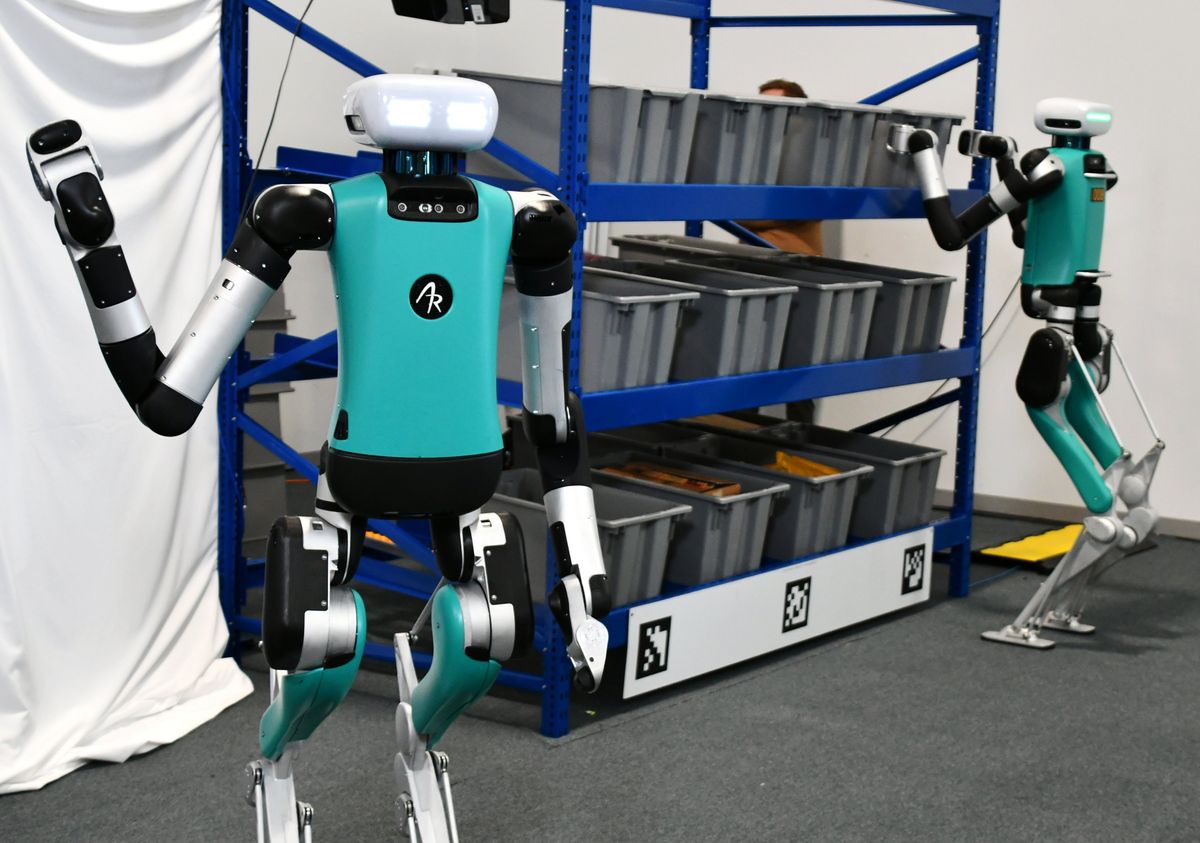Agility Robotics has announced the opening of a 6,500 square-meter factory dedicated to building its Digit humanoid robot. The factory is located in Oregon, which, in the opinion of this native Oregonian, is an excellent state in which to locate anything. At peak capacity, RoboFab will employ 500 humans (working alongside a bunch of Digit robots) and will be able to produce “more than 10,000 robots per year,” a staggering number considering that Earth’s current population of humanoid robots likely numbers in the low hundreds at most.
The factory, in Salem, Ore., has been under construction since last year, and is “set to open later this year,” according to Agility’s press release. In 2024, Agility anticipates that it will have “production capacity of hundreds of Digit robots in the first year, with the capability to scale to more than 10,000 robots per year.” Note that when Agility is referring to “production capacity,” the company is not going so far as to suggest that it will be selling that many robots, just that it is theoretically capable of making them, although scaling this up is by no means trivial.
One of the things that Agility is going to have to figure out as part of this process is how to efficiently build and then support complex robots at this scale, which is a vastly different problem than building a couple of dozen robots for research and commercial pilots. This includes everything from supply chain (how many actuators do 10,000 robots a year need and where the heck are you going to find them?) to manufacturability—stuff like, how can you minimize the number of times you have to attach one thing into another thing while putting your robot together? Depending on your perspective, these problems are either interesting or terrifying (or maybe both) but either way they’re not problems that humanoid robots have really had to deal with before. So, kudos to Agility for getting to this point—the hard part starts now, when they have to find people to actually buy all of these robots.
Agility says that its first partner customers can expect delivery of their Digits next year, and the rest of us will see general availability in 2025.
- What Robotics Experts Think of Tesla’s Optimus Robot ›
- Agility Robotics Unveils Upgraded Digit Walking Robot ›
- Agility’s Latest Digit Robot Prepares for Its First Job ›
- Figure Unveils Its Humanoid Robot Prototype - IEEE Spectrum ›
- Robot Videos: Weekly Highlights and Innovations - IEEE Spectrum ›
- Humanoid Robots: The Scaling Challenge - IEEE Spectrum ›
Evan Ackerman is a senior editor at IEEE Spectrum. Since 2007, he has written over 6,000 articles on robotics and technology. He has a degree in Martian geology and is excellent at playing bagpipes.


